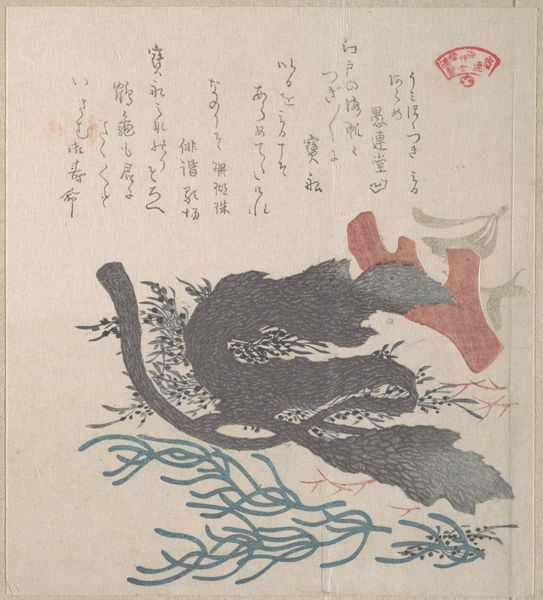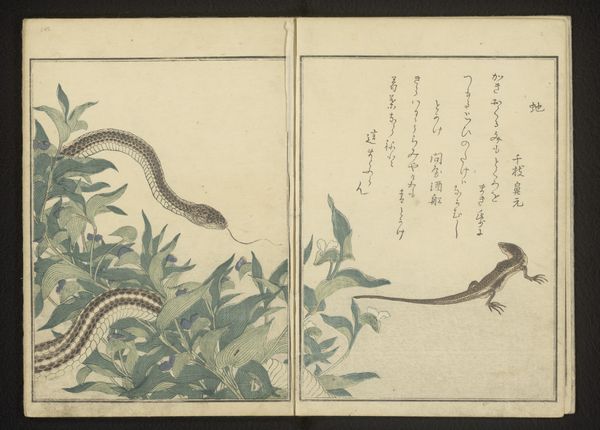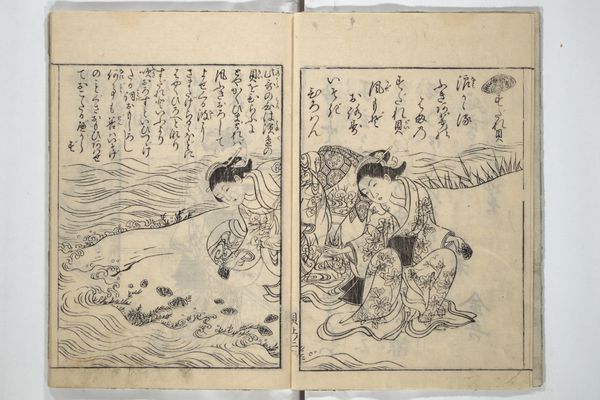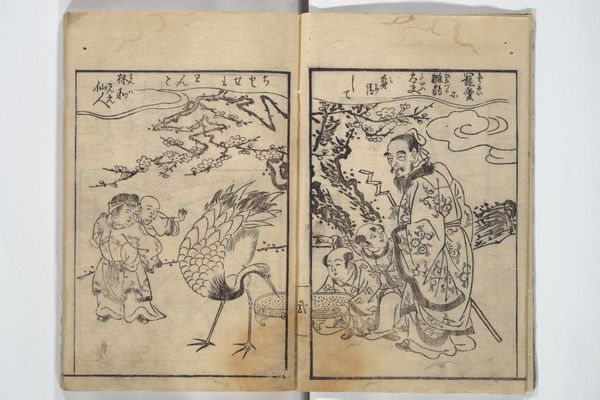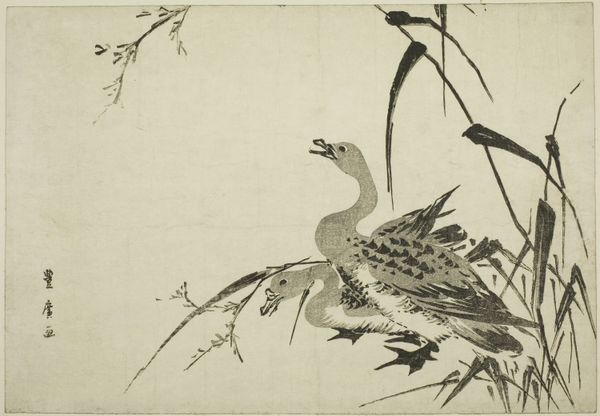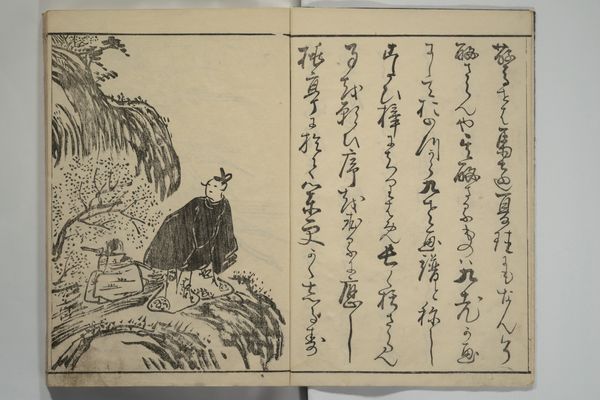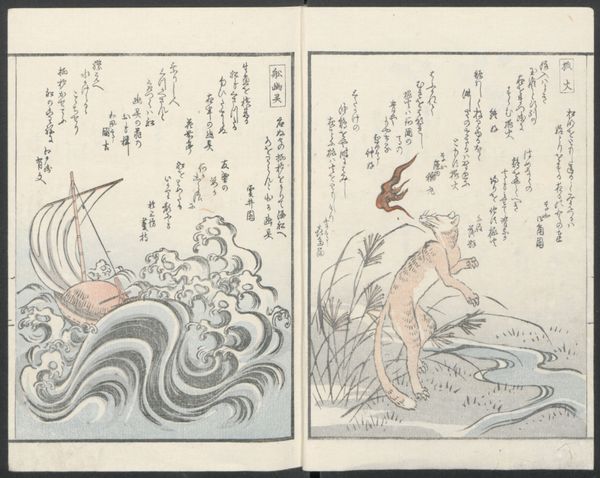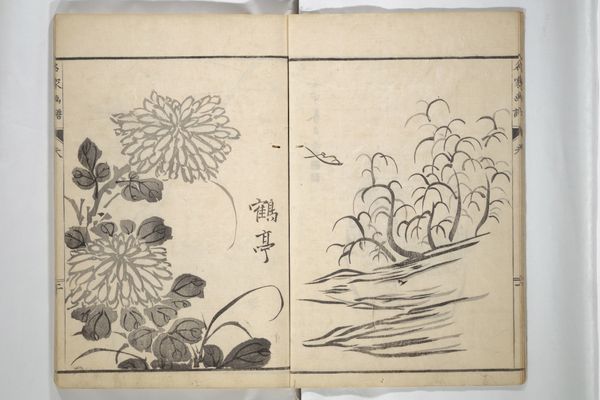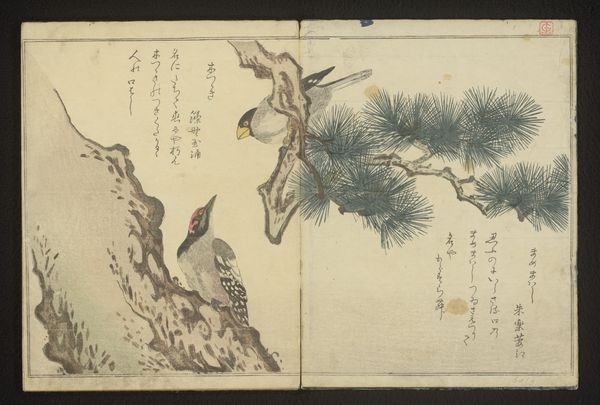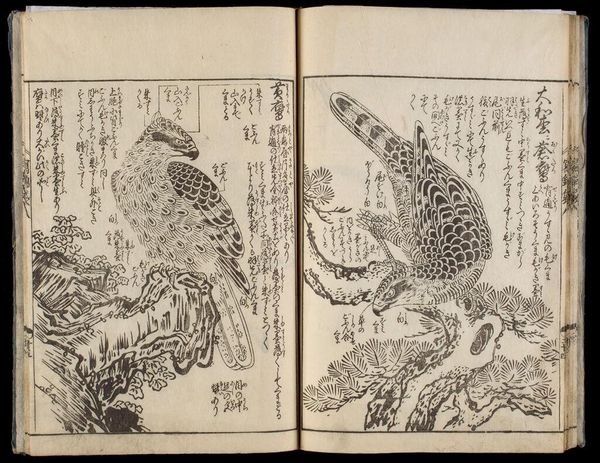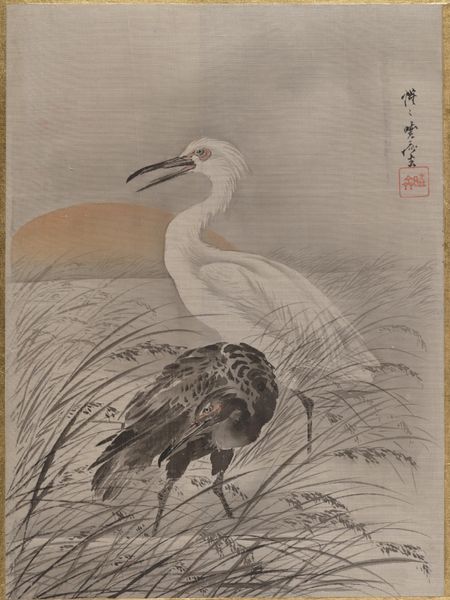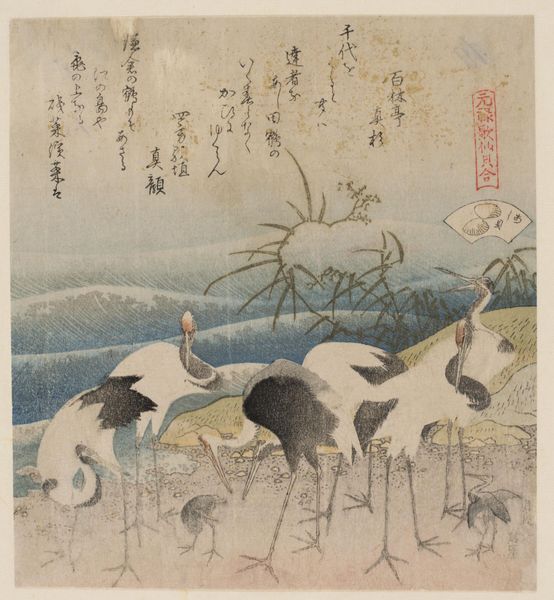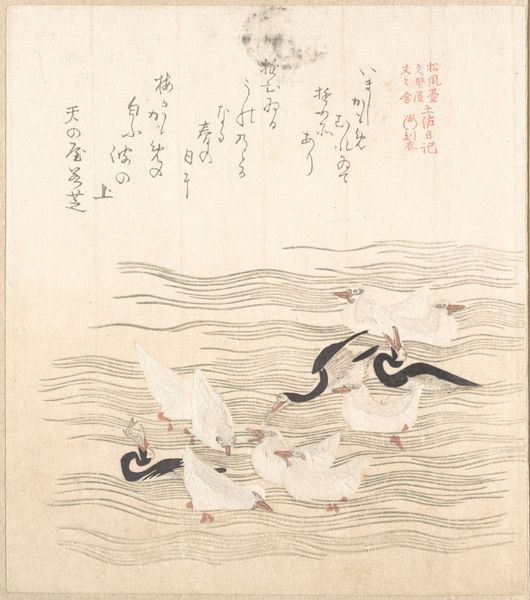![Kan'yōsai Picture Album (Kan'yōsai gafu 寒葉斎画譜): [volume 2] by Kan'yōsai 寒葉斎 (Tatebe Ayatari 建部綾足)](/_next/image?url=https%3A%2F%2Fd2w8kbdekdi1gv.cloudfront.net%2FeyJidWNrZXQiOiAiYXJ0ZXJhLWltYWdlcy1idWNrZXQiLCAia2V5IjogImFydHdvcmtzL2E4Y2UzNzIwLTI4ODQtNGY3Mi04M2Q4LTUyYTE2NjFjYWE1My9hOGNlMzcyMC0yODg0LTRmNzItODNkOC01MmExNjYxY2FhNTNfZnVsbC5qcGciLCAiZWRpdHMiOiB7InJlc2l6ZSI6IHsid2lkdGgiOiAxOTIwLCAiaGVpZ2h0IjogMTkyMCwgImZpdCI6ICJpbnNpZGUifX19&w=3840&q=75)
Kan'yōsai Picture Album (Kan'yōsai gafu 寒葉斎画譜): [volume 2] 1762
0:00
0:00
#
aged paper
#
toned paper
#
ink paper printed
#
book
#
asian-art
#
sketch book
#
japan
#
personal sketchbook
#
sketchbook drawing
#
watercolour bleed
#
watercolour illustration
#
sketchbook art
#
watercolor
Dimensions: each: 10 3/8 × 7 1/16 in. (26.3 × 18 cm)
Copyright: Public Domain
Curator: Here we have a page from the "Kan'yōsai Picture Album," volume two, by Kan'yōsai, also known as Tatebe Ayatari, dating back to 1762. It's a double-page spread rendered in ink on paper, currently housed at the Metropolitan Museum of Art. Editor: Immediately, I'm struck by the raw simplicity, almost like a study in contrasting textures using only shades of grey. It has an earthy and subdued tone. Curator: It’s more than meets the eye. Kan'yōsai's work is intriguing, you know, capturing both the immediacy of life and a sense of reflection on its transience, a poignant mix! The image appears to be a couple of waterfowl swimming along. I love their open mouths, it almost feels like they're singing to the heavens! Editor: It is amazing to consider what limitations this work must have been born from; simple lines rendered economically become feathers, water, depth, form... And there's no correction—the labor on display really heightens its expressiveness! The ink and paper have such character; that texture becomes vital in capturing light across the ripples on the water's surface. Curator: Yes! Kan'yōsai wasn’t just recording what he saw; he was interpreting the soul of these birds, letting us in on their watery world with gentle empathy. Each mark feels deliberate, alive with a kind of focused energy. The artist is both observing and creating a world with his brush. Editor: And the print process itself! It feels crucial here—you get a clear sense that Kan'yōsai understood what the block could do, pushing against its limitations in mark-making with skill. There is the texture of paper as a canvas for reception and dispersal of ink, allowing the tonal ranges to achieve unique gradients within each composition. It speaks to how materials can truly lead the artistry if you allow them. Curator: Indeed, seeing the process in this way lets us appreciate the intimacy that the artist has in crafting his album. Thanks for drawing out these observations! I feel it has unlocked even more mystery from its world. Editor: It's mutual. This brief encounter highlighted the rich potential in exploring art through a close examination of its physical properties! I shall carry these observations as a future benchmark for artworks!
Comments
No comments
Be the first to comment and join the conversation on the ultimate creative platform.
